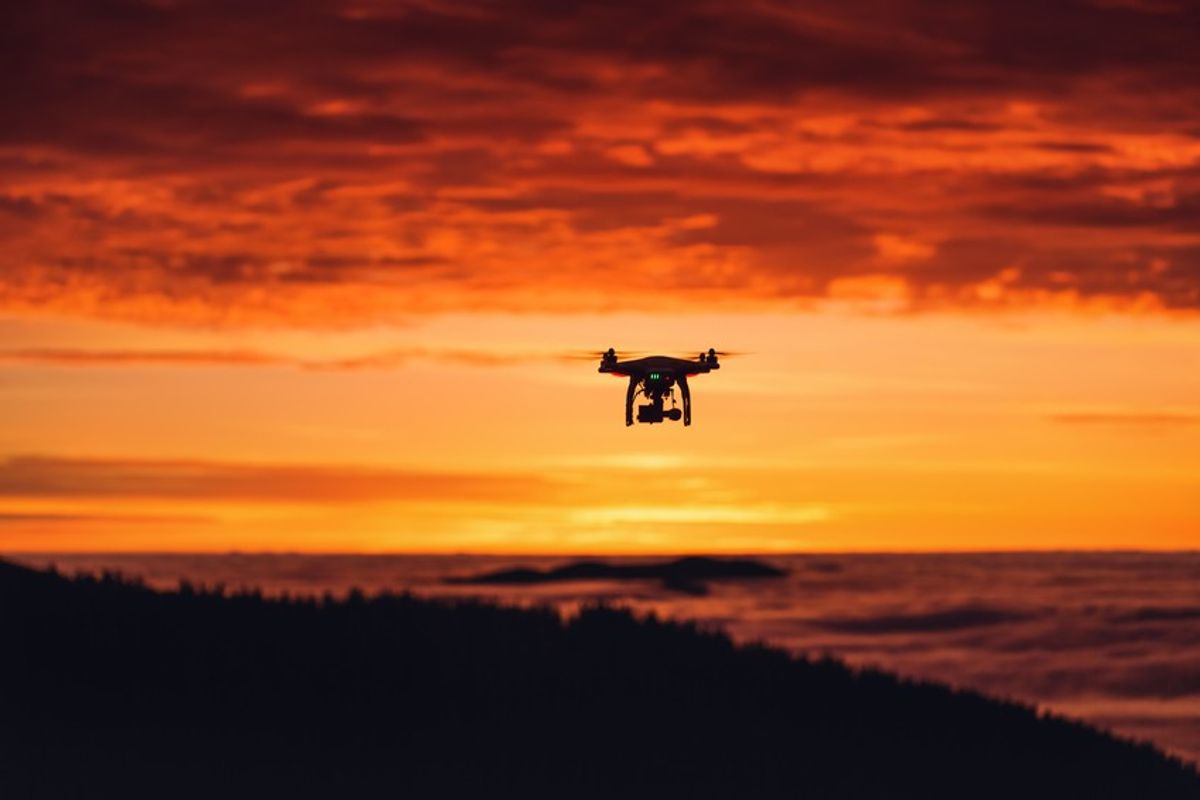The Cipher Brief spoke with Sean McGowan and J. Tyler Black, both attorneys at Thompson Coburn LLP in Washington, DC, about the legal implications of the spread of drone technology. McGowan is Co-Chair of Thompson Coburn’s Drone Practice Group, and Black works in the firm’s transportation regulatory practice. Both weighed in on current regulatory trends and where they see the legal environment headed.
The Cipher Brief: What does the current regulatory environment look like for drones, and how has it changed?
Sean McGowan & J. Tyler Black: For decades, recreational and hobby model airplane enthusiasts have used the national airspace system without major issue. As these aircraft, onboard technologies, and control software have advanced, new and sophisticated applications for remote controlled aircraft has developed, including in the commercial context. This also began to present new dangers to the national airspace system. The FAA initially sought to forestall widespread use of drones for “commercial purposes” via a 2007 Notice of Policy on Unmanned Aircraft Systems Operations in the United States National Airspace System. In the FAA Modernization and Reform Act of 2012 (2012 Act), Congress laid much of the groundwork for the immediate expansion of commercial drone flights and walled off recreational drone use from excessive regulation.
Congress and the FAA have constructed a regulatory environment where the nature of the drone use determines what laws and regulations apply.
If you are a public agency or organization seeking to use a drone for official business, then the Public Certificate of Waiver or Authorization (COA) process is set up for you.
If you want to fly drones commercially, typically the only viable path is to obtain a Section 333 of the 2012 Act exemption, which allows the FAA to make a case-by-case determination regarding whether specific drone operations are appropriate for use. If an exemption is granted (more than 1,500 have been granted as of Sept. 17), the commercial operator will be able to employ a licensed sport pilot (or higher) to fly a drone commercially, according to the parameters of the grant. This exemption process is designed to be temporary until permanent FAA regulations for commercial operations are finalized.
If you are you a recreational drone user, then Advisory Circular (AC) 91-57A applies and replaces previous guidance that did not mesh with the 2012 Act. The AC lays out the guidelines for recreational flight such as: adhering to community-based safety guidelines, flying more than five miles from airports, flying below 400 feet, and other best practices.
TCB: How has the FAA adapted its regulations to deal with the proliferation of drone technology? Where do you see regulatory trends heading, and how are they likely to impact businesses employing drone technology?
SM & JTB: Commercial drones in particular are somewhat in regulatory limbo right now. In February 2015, the FAA released a Notice of Proposed Rulemaking (NPRM) that would cover small (less than 55 pounds) drones operating for commercial purposes. While the FAA still must review all 4,000+ public comments received before it finalizes the rule, the agency’s proposed framework establishes a new “Unmanned Aircraft Operator” certificate and makes other changes to lower the barriers for commercial drone flight. Some business operations, such as videography, land surveying, agriculture, industrial inspection, and construction, will slot into the proposed rules more easily than others, such as package delivery. Interestingly, the FAA states in the NPRM that it is considering relaxed standards for so-called “microUAS” (drones weighing less than 4.4 pounds) in certain airspace as long as the operator certifies he or she has sufficient “aeronautical knowledge to perform the operation.” The microUAS would have to be made of frangible materials that easily break or yield on impact, among other restrictions. The FAA suggested in the NPRM that such a micro UAS category could be integrated into the final rule.
TCB: How do you see the law catching up to the spread of drone technology?
SM & JTB: The FAA has a huge task ahead of it and is proceeding cautiously. This is a developing area of technology and regulatory law, and the agency will continue to develop new rules governing the way drones can be safely and legally operated and integrated into the national airspace system. Some of those new rules will likely be in response to congressional direction (as was the case following the 2012 Act). Other rules could be modified or developed in response to real world events, accidents, and the novel ways in which companies and individuals develop uses for drones. A rule can keep up with technology if its terms and the process for its modification are sufficiently flexible. It takes time for the regulatory process to go through its motions, but the final rules will be the result of years of consultation with industry, small businesses, technology companies, and other government agencies.
Sean McGowan is a partner at Thompson Coburn LLP and co-chair of the firm’s Unmanned Aircraft Systems practice. He counsels clients on compliance matters involving U.S. federal statutes and regulations that affect the transportation industry, including aviation, maritime, trucking, and rail.












